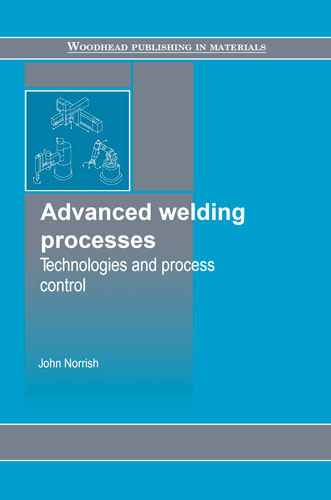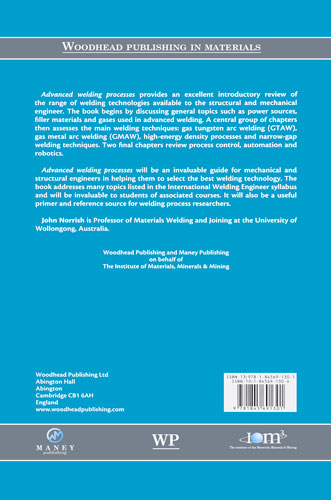Сб с 10 до 16
Advanced welding processes/Современные сварочные технологии
Книга на английском языке.
Advanced welding processes provides an excellent introductory review of the range of welding technologies available to the structural and mechanical engineer. The book begins by discussing general topics such power sources, filler materials and gases used in advanced welding.
A central group of chapters then assesses the main welding techniques: gas tungsten arc welding (GTAW), gas metal arc welding (GMAW), high energy density processes and narrow-gap welding techniques. Two final chapters review process control, automation and robotics.
Advanced welding processes is an invaluable guide to selecting the best welding technology for mechanical and structural engineers.
Contents
Preface
Acknowledgements
1 An introduction to welding processes
1.1 Introduction
1.2 Conventional welding processes
1.3 Summary
2 Advanced process development trends
2.1 Introduction
2.2 Safety and environmental factors
2.3 Skill and training requirements
2.4 Areas for development
2.5 Process application trends
2.6 Summary
3 Welding power source technology
3.1 Introduction
3.2 Basic power source requirements
3.3 Conventional power source designs
3.4 Electronic power regulation systems
3.5 Output level, sequence and function control
3.6 Practical implications of electronic power regulation and control
3.7 Summary
4 Filler materials for arc welding
4.1 Introduction
4.2 MMAW consumables
4.3 Submerged arc welding consumables Filler wires for GMAW and FCAW
4.5 Summary
5 Gases for advanced welding processes
5.1 Introduction
5.2 Shielding gases for arc welding processes
5.3 Gases for laser welding
5.4 Summary
6 Advanced gas tungsten arc welding
6.1 Introduction
6.2 Process developments
6.3 Process variants
6.4 Control of GTAW and related processes
6.5 Summary
7 Gas metal arc welding
7.1 Introduction
7.2 Metal transfer in GMAW
7.3 The physics of metal transfer
7.4 Summary: metal transfer phenomena
7.5 Control of conventional GMAW
7.6 Summary: process control
7.7 Recent developments in the GMAW process
7.8 Summary
8 High-energy density processes
8.1 Introduction
8.2 Plasma keyhole welding
8.3 Laser welding
8.4 Electron beam welding
8.5 Summary
9 Narrow-gap welding techniques
9.1 Introduction
9.2 Principles and features of narrow-gap welding
9.3 Narrow-gap welding processes
9.4 Summary and implications
10 Monitoring and control of welding processes
10.1 Introduction
10.2 Manual control techniques
10.3 Monitoring
10.4 Automated control techniques
10.5 Summary and implications
11 Welding automation and robotics
11.1 Introduction
11.2 Automation options
11.3 Simple mechanization
11.4 Dedicated and special-purpose automation
11.5 Robotic welding
11.6 Modular automation
11.7 Programmable control
11.8 Remote-control slave and automated systems
11.9 Advances in welding automation
11.10 Evaluation of and justification for automated welding
11.11 Summary
Appendices
Appendix 1: Welding processes classification
Appendix 2: Shielded metal arc welding (SMAW) electrode classification
Appendix 3: Burn-off characteristics
Appendix 4: American, Australian and European FCAW classification systems
Appendix 5: Flux-cored wire for surfacing and wear resistance
Appendix 6: Plasma keyhole welding parameters
Appendix 7: Plasma keyhole welding of titanium
References
Index




